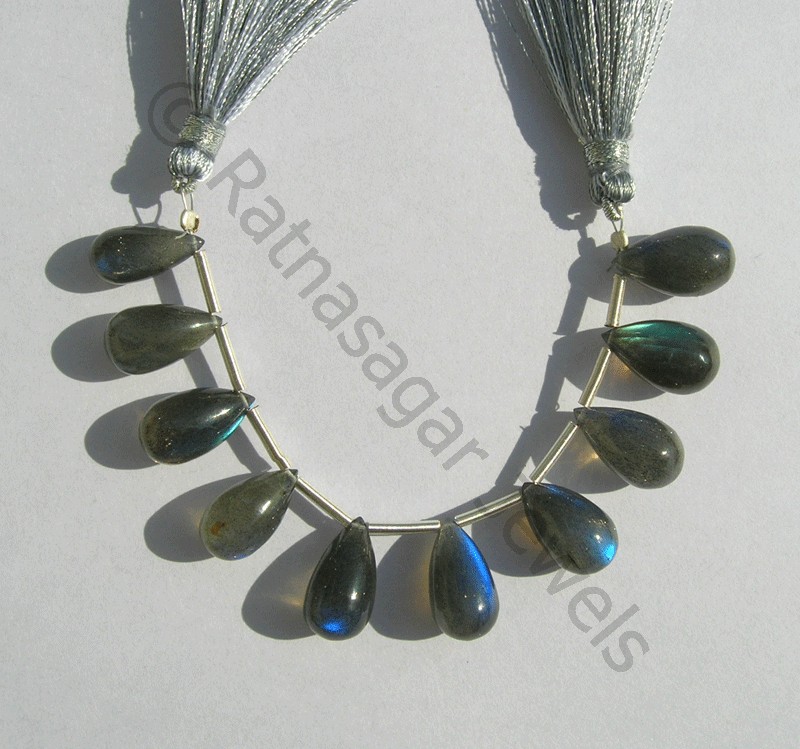Gemstones across the world are cut in different shapes and sizes to reveal their most fascinating aspects like brilliance and fluorescence, with minimum wastage of raw gemstone while cutting. The most popular gemstones are mostly cut with a flat table and pavilion facets. Preferred over other cuts, the crown and pavilion are preferred owing to the maximized beauty and brilliance.
Thus, it is the amount of light that the can pass through the gemstones that make them viable in the market. And it all depends on the cut made. In this play of cuts and shapes, the art of making Briolette gems have regained their importance in the last few years.
How old is the briolette culture?
The first briolette was probably cut in the 15th century for the King of England, Henry V. However, they gained prominence after a special briolette necklace was presented to the French Empress Marie Louise, gifted by none other than Napolean, the Great. Currently exhibited at the Smithsonian Institution, the lovely diamond necklace has 10 briolette gemstones weighing over 40 carats in total.
The Indian Connection:
The mention of the briolette cutting of gemstones finds their origin in India. However, there is no concrete evidence to prove this. The Briolette of India, one of the oldest diamonds in the world was the first briolette to be ever cut.
A colorless diamond, this briolette gemstone weighs over 90.4 carats. It was acquired by King Louis VII’s consort, Eleanor of Aquitaine. Even Koh-I-Noor is believed to have sported briolette cut before it was robbed from the Indian treasury by the Persian invaders in the 17th century.
Why briolette gemstones are hard to cut?
The briolette gems and beads have a unique tear drop gemstone shape that has pointed tip and curved top. It takes many strokes of cutting to derive the shape. Hard to manufacture by hand, even best machines and Laser-cutting tips can’t generate the perfect Briolette gemstones. Relatively soft gemstones like quartz, emeralds, turquoise, aquamarine, oval and chalcedony are cut into briolette shapes.

Briolette setting:
Briolette gemstones are mounted on wires and strings by using sandblasting techniques. The procedure increases the overall surface area of the finished briolette, which means that the gemstone will have clear peaks and valleys for superior structural strength.
Adhesives can also be used, but only to fill gaps up to 0.04”.
Modern machines to make briolette gemstones:
The briolette-cut gemstones are usually manufactured by making a cross-drill using laser beam or pin. It requires expertise to make the cut, as briolette gemstones can’t be held together using adhesives. One of the costliest cuts in the market, briolette gemstones are 100% adhesive free and often come with conical caps.
The drilling is done by an Ultrasonic machine that minimizes chipping and prevents breakages mid-operation. The quality of briolette is examined by checking the degree of flatness, tip radius, angle of cut and diameter of the gemstone.
Higher the quality, higher will be the quoted price. Of course, the color and the raw material are primary factors that decide the price of the finished gemstone.
Save
daf90aa6-c9a7-45a6-b36a-91090f123fd1|1|5.0|27604f05-86ad-47ef-9e05-950bb762570c
Tags
: Diamond Beads . Tear Drop Gemstones . Briolette gemstones . Aquamarine Gemstone Beads